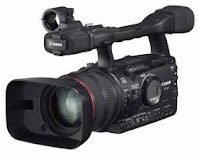Pre Production
Prelim
When planning for our prelim task, we had to make a storyboard to help us while filming and to keep our shots organised. Initially we had a storyboard that had too many shots for a short prelim task. When drawing out the storyboard we over complicated a simple scene of walking through a door with too many shots. Its was very over crowded with variety of shots. The story board was not completed on time for the production of the task. As a group we decided to redo the task as the first time wasnt as good. We went through the pre production process and produced a new story board and that was more simpler but still had a variety of shots. This help us to be more organised while filming agai second time around.
Main task
During the pre production of the main task we had to consider all the ideas we had come up with before drawing up a storyboard. As a team we came up with four main ideas. The bloody mary idea seemed to go down well in pre production research. Some of the target audience said "its a unique idea, and using the myth bloody Mary is something no one has done before. Trying to come up with the opening sequence was a obstacle, because we didnt want to give to much away. When creating the storyboard we came up with a very complicated opening initially. As a group we thought this may confuse the audience as it would be too much information to take in. So halfway through our pre planning we changed the sequence of shots. We made it more simpler. The story board we came up with in the end had a variety of shots and all together would leave the audience in dark abouy what would happen next.
I have learnt from this experience that a storyboard is just as important as a piece of equipment, it helps the production process to be more organised and more straightforward for the cameraman and directors. We learnt from our mistakes in the main task and we re drafted the story board to avoid re filming or even failing the task.
Production
Prelim
The prelim was our first experience trying out shots where it actually mattered. When actually fimling the different shots we had to consider all types of issues such as secure flooring, space to film the shots and also the line of 180 degrees. As we di have to re shoot our entire task we wanted the second time to be better. When looking over our first set of footage, we realised the shots looked amateur and unprofessional. The spirit level looked as if it wasn't used properly and the shots were too short to even be used. So to resolve this the second time we followed our storyboard very carefully and we used the equipment to our advantage, by this I mean using the spirit level to keep our shots level and the using the tripod to control the pans and tilts. Also when we filmed the over the shoulder shots we made sure there wasnt too much head space, or too much space around the side of the person. In the end our second go turned out to be better.
Main task
The main task was a more complicated task and we needed to consider higher rated shots, such as match action shots and cut away shots. When filming we did have some boundaries to deal with, the location was small but it was ideal for our task. The only problem was producing shots such as over the shoulder, but there wasny much spacr behind the person to work with. There wasnt really anything we could do about this but we just had to use differeny kinds of shots. Whem getting feedback from our target audience thet told us " because this is a horror genre based opening sequence you could have used hidden shots to emphasis the fact someone was watching them". I think that the shots wr used for the opening sequence didnt really relate to our genre except for the close up shots for expressions.
I learnt that it is important to consider the genre of the sequence when planning and filming shots because they reflect the horror in the sequence. Also I learnt that as we progressed from the prelim task to the main task our range of shots improved and certain shots suite types of action.
Post production
Prelim
This was our first real task we had to edit, noy including the practice we had before hand. We used out time well, we completed the task of editing in the time given and used all the features we gad learnt abouy in the practice sessions we had. We learnt new things by trying them out while editing. Once we completed the task we showed our prelim task the audience and gathered feedback. Many had good criticism, "some said that the pan shot didnt have enough room infront of character and too much space behind them". This could be down to the fact that we werent as experienced at this point. All we could do is note down the feedback and insue we dont make the same miatakes in our main task and avoid making them, by practising the shots, or rehearsing the shots before actually recording them.
If I had the opportunity to redo the prelim task I would do many things differently. For example I would make we produce a good, detailed storyboard for the production process to avoid re shooting and wasting time. Also while filming the shots I would take more time on each shot, and make sure as a group we are confident that we have a good take.
Main task
When editing the main task we had a clearer objective of what we wanted the end product to look like and how it should come across to the audience. Once we had completed the editing, we had a teacher check over and give us our first set if feedback. We had good and bad critisim; the positives were "good ident" " the type of music fitted genre" "music fit in with transition". The negatives were "the music played throughout the whole opening sequence and there wasnt a clear difference between normal reality and the horror scene in sence of music" "some fades werent long enough" "worms eye shot of taking of shoes was too long". Being the main editor I took this feedback away and worked with the group in how to improve it, we cut music out of the talking scenes and put it in when the actio actually starts to build it up to the door slam and screams. After we made the changes we showed the target audience the opening sequence, once again we had mixed feedback. The good was that it fitted in with the genre and also the shots used to emphasis reaction and the blood used was a good use of codes and conventions. The negative feedback we go was the "lighting wasnt dark enough for the horror genre" "titles font didn't link in with genre" "gave too much away for a opening sequence".
If I had the chance to redo the main task I would consider all the feedback we got, and that would be to be more adventurous with our ideas and to use less dialogue in the opening sequence. Also the idea of bloody mary was unique and should use this to out advantage. I would change the storyline to make it more simpler but use a variety of shots to make it look horror/thriller and to intrigue the target audience.











